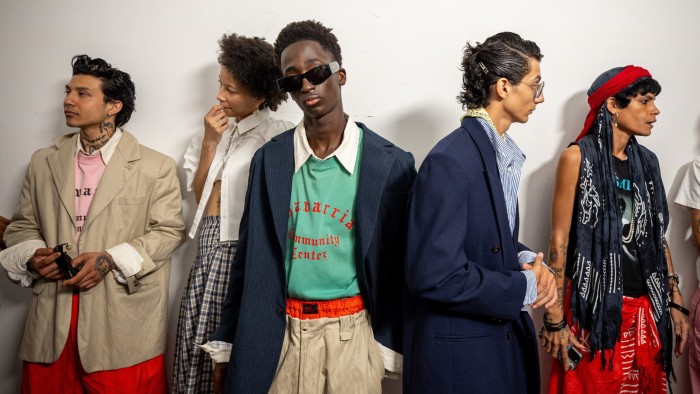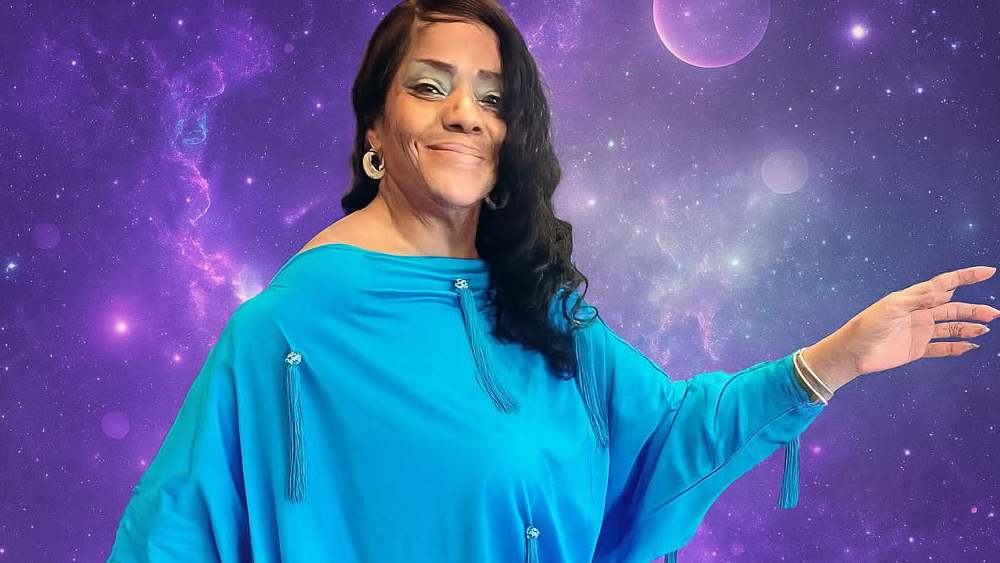In a challenging climate for luxury goods — with slowing sales, consumer fatigue and designer musical chairs in hyper-drive to try and revive the industry’s biggest names — designers showing at Paris men’s fashion week seemed to band together to justify themselves, their jobs and the fashion industry as a whole.
The power of creativity was the overriding message from a strong week where, under beating heat and tropical thunderstorms, various brands made a case for producing more stuff for an already-saturated market. No, none of us really need another suit — but when it’s cut in espresso brown silk taffeta by Anthony Vaccarello at Saint Laurent, or exquisite dove grey cashmere in Jonathan Anderson’s excellent Dior debut, there’s a jolt of desire that bucks against the idea of need. Instead, it’s the electrifying notion of want.
So, what will we want next season? There was a surprising synergy between designers — trends, once dead in the water, seemed to rear their heads. Pyjama dressing was big. So was the return of the shirt and tie, hitherto fuddy-duddy but now proposed by hyper-classic couture houses and the avant-garde likes of Japanese designer Junya Watanabe alike. There was also a whiff of the preppy American style popularised by Ralph Lauren, with cargo shorts and chinos and polo shirts and lots of denim, reinvented, revived, reimagined.

Lauren himself doesn’t show in Paris, but there was a strong American contingent making their voices heard. Pharrell Williams probably speaks the loudest, by stint of selling millions of records and leading the men’s division of the largest luxury goods company in the world. His Louis Vuitton collection was an ode to India, with the prerequisite collaboration with India-based creatives to avoid any accusations of cultural appropriation, and a revival of a Marc Jacobs-era Vuitton suitcase designed for Wes Anderson film The Darjeeling Limited. Embossed with a menagerie of animals, it’s been spun out over a whole product range.


But the focus here was on the clothes, which weren’t loud at all. Rather they were subtly tailored, quietly embellished and done with a light hand. Some of Williams’ previous shows have seemed engineered for stadium audiences — aesthetics shouting to the cheap seats at the back. This felt not like “quiet luxury”, but quieter. It was all the more seductive for its whisper, and challenged those who have written off Williams for his lack of formal design training. The man has a vision.
A very different vision came courtesy of Rick Owens, whose singular approach to fashion across four decades is being celebrated in a retrospective exhibition at the Palais Galliera museum. “A retrospective summons up thoughts of peaking, finality and decline,” said Owens, who does a swift side trade in one-liners. “I was delighted to lean into that.”


Hardly. Across the street, in the centre of the fountain of the Palais de Tokyo, Owens presented his latest wares, models clambering up and down a metal scaffold tower in perspex platform boots, their clothes strapped and wrapped and sliced away. Every now and again, a figure would submerge themselves entirely in the stagnant water in a fabulous expression of careless nonchalance. When your greatest hits are this great, they look just as good second or third time around.
The third great American showing in Paris was Willy Chavarria, a former Ralph Lauren designer. While designing his collection — which was, he said, about joy, positivity, the uplifting power of colour — immigration officials began to arrest Hispanic immigrants in Chavarria’s hometown of Huron, California. Chavarria broke down talking about it, and opened his show with a kneeling phalanx of men of colour dressed in white, referencing media images of deported migrants in prisons in El Salvador.
“It’s about equality and human decency,” he said backstage before the show. “Everything we do, whether we want to or not, is political.”


The clothes themselves, mixing men’s and women’s styles, zinged with saturated hues inspired, Chavarria said, by the colours of drab factory uniforms, here reclaimed, celebrated. “Humanity is being erased. People are being disappeared,” he said. It’s a message that lingers, and matters.
Saint Laurent’s Vaccarello is the prince of Parisian elegance in menswear. Last season he showed thigh-high kinky boots and flannel suits; this time it was sheer, slithery nylon worn close to the body like silk chiffon, with women’s couture fabrics cut into suits.
“I didn’t want to be stuck in the darkness I did last season,” he said, echoing the overall mood of positivity and colour that infected the Paris shows as a whole. He had designed a bunch of pyjamas, but once he’d seen other designers were also showing them this season, he cut all but three from the line-up.


Julian Klausner, the new designer at Dries Van Noten, sent out a stellar first menswear show, rich and juicy with flushed colour, shorts clinging to the body, prints draped into sarongs over tailoring. Historically, Dries Van Noten collections could be a little hit or miss: Klausner has the benefit of sifting through the archive and referencing the very best bits, as well as injecting something of his own. His soft tailored overcoats in washed duchess satin were, simply, some of the best garments of the season.
In a different vein, so were Véronique Nichanian’s Hermès clothes: her paper-thin crocodile blouson zagged with silver sips; her featherweight poplin shirts with pleated asymmetric plastrons bleeding into heritage scarf prints; her big Birkin bags that unjustly steal retail attention from her brilliantly stealth clothes.
On the final day of Paris, the British designer Craig Green showed a bunch of clothes made of old bedsheets. There were sports clothes based on the two-dimensional, sketched-out silhouettes of football kit. From the corners of their mouths, models puked out swaths of fabric based on imagery of Victorian pseudo-exorcisms, and wore pinhole LED “spectacles” made from the bulbs used to illuminate doll’s houses.


It was presented in a room cast with a sickly jaundice of yellow light, because “babies cry more in yellow rooms, and people argue more in them”, Green said. It was a truly fantastic collection — fantastic because, in that amalgamation of oddities, that stream-of-consciousness inspiration, something not only genuinely new and compelling but desirable and beautiful emerged.
Green is breathtakingly talented. He has a healthy business based on neat shirts with intriguing technical details that appeal to normal blokes and fashion-philes. But his fashion shows are vehicles for extraordinary creative endeavours, for pushing ideas forward and proposing not what’s now, but what’s next. In a truly great Paris season, his wonderful clothes looked right at home.
Follow us on Instagram and sign up for Fashion Matters, your weekly newsletter about the fashion industry


